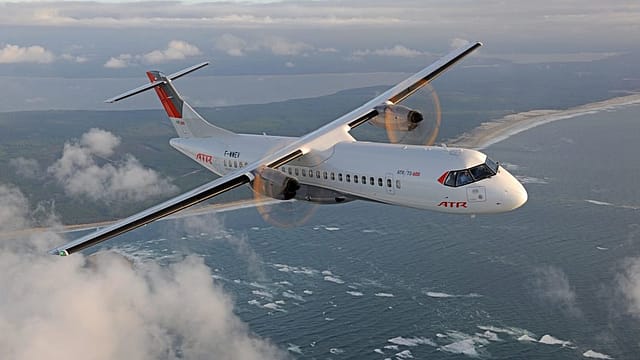Aircraft MRO service revenue to surpass ₹4,500 crore in FY26: Crisil
ADVERTISEMENT

Revenue of the domestic aircraft maintenance, repair and overhaul (MRO) industry will surpass ₹4,500 crore in fiscal 2025-26, clocking an impressive 50% growth over fiscal FY24, according to Crisil.
This growth will be fuelled by fresh demand for maintenance services emanating from rising operating fleet size of Indian aircraft carriers - expected to grow by up to 20-25% by next year, the credit rating agency forecasts.
The reduction in Goods and Services Tax (GST) on aircraft components and services not only positions domestic MROs more competitively with their overseas competitors but also ease their working capital blockage, says Crisil. This along with players’ improving profitability will have MRO players seeing improved credit profile over the medium term.
Indian MRO players typically provide three types of services, line checks (undertaken before every take off), air frame checks (every 12-18 months which involves grounding the aircraft for 3-4 weeks) and redelivery checks (at the time of expiry of lease period of 6-7 years).
“While line and airframe checks are strongly correlated with aircraft fleet size, redelivery checks are likely to grow by up to 10x next fiscal (over fiscal 2024 levels). This will be driven by the reduction in GST input tax, to 5% on all aircraft components, which may lower the component-related expenditure and place Indian MROs on par with their Asian competitors. Their intrinsic cost advantages will further help Indian MROs gain market share,” says Shounak Chakravarty, director, Crisil Ratings.
January 2026
Netflix, which has been in India for a decade, has successfully struck a balance between high-class premium content and pricing that attracts a range of customers. Find out how the U.S. streaming giant evolved in India, plus an exclusive interview with CEO Ted Sarandos. Also read about the Best Investments for 2026, and how rising growth and easing inflation will come in handy for finance minister Nirmala Sitharaman as she prepares Budget 2026.
Notably, in FY24, only 14% of the total MRO spends by Indian carriers were carried out by Indian MROs. This is mainly because, high value, heavy maintenance checks, for example engines checks and components overhauls which take place every 20-24 months, are usually contracted with overseas MROs due to capacity constraints and higher turnaround times of Indian MROs.
In addition to demand tailwinds, Indian MROs are also adding to their service repertoire which will improve their penetration to up to 20% by next fiscal, as per Crisil. The share could have been higher but for the time needed to ramp up hangar capacities, local ecosystem for aviation spare parts and extensive training of manpower that will yield results only over the medium term.
With growing scale of operations and rising share of higher-margin redelivery segment, profitability should also improve to around 20% by FY26, says Crisil. This along with correction of inverted duty structure (and thereby reduce accumulation of input tax credit) will boost cash flows for the MRO service providers.
“We expect, the working capital cycle to improve by 20-25 days and hence overall debt levels will remain range bound even as MRO players invest in expanding their service offerings,” says Pallavi Singh, Associate Director, Crisil Ratings.
According to aviation consultant CAPA, India’s airline fleet is set to double by 2030 as carriers could add up to 700 aircraft in the next 5-7 years.
